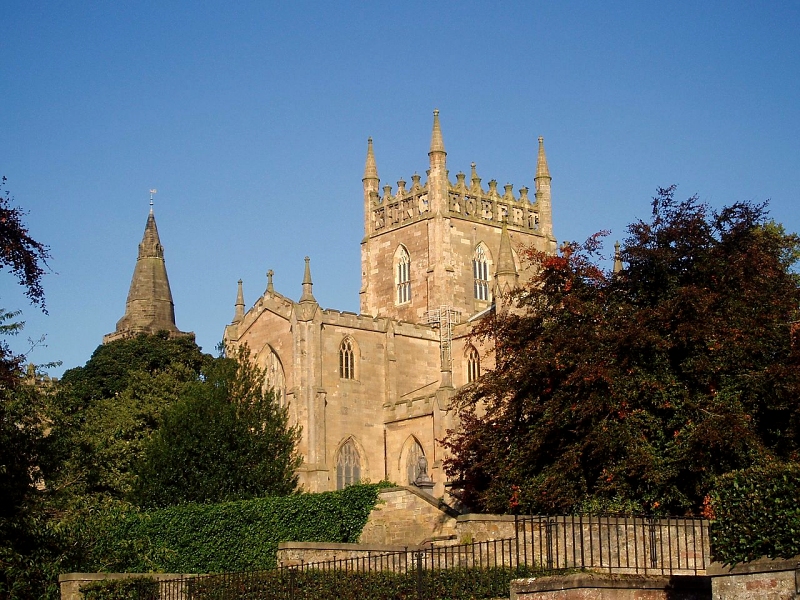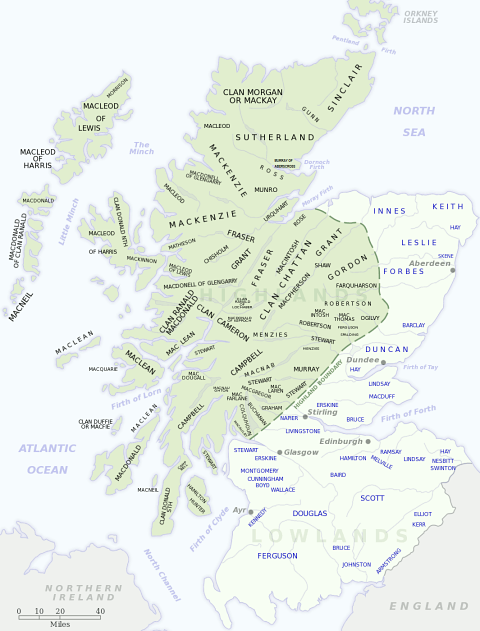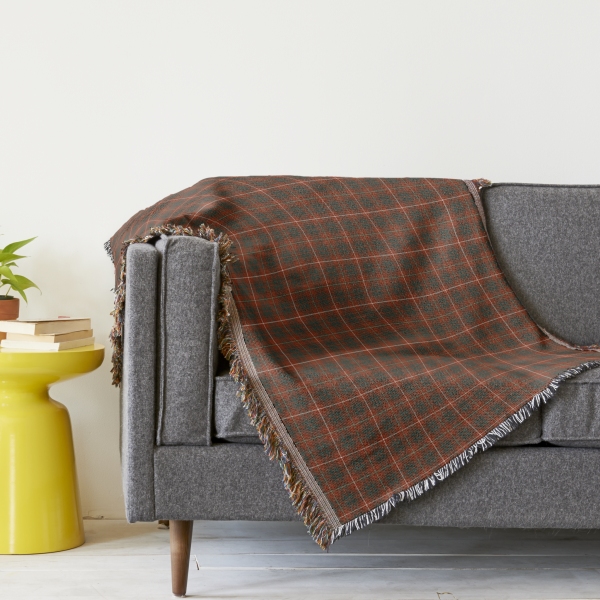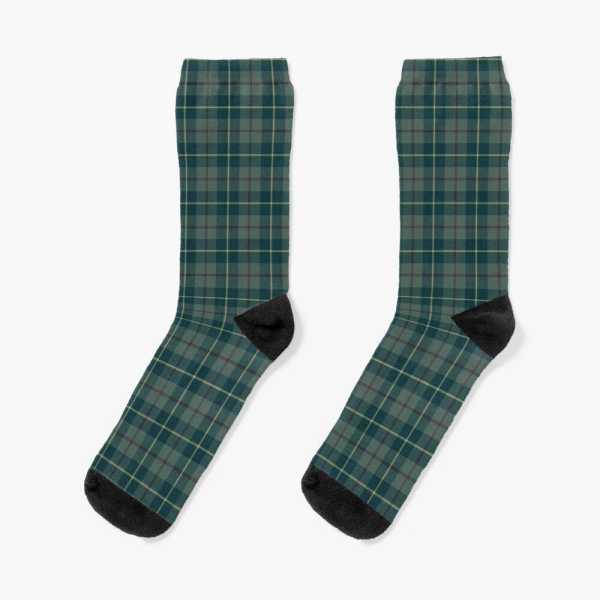
Motto: Fuimas (We have been)
Historic Seat: Annandale
District: Galloway
Associated Surnames: Airth, Carlyle, Crosby, Randolph, Stenhouse
Associated Tartans:
Early Bruce Genealogy and History:
(Excerpt from "The Scottish Clans and Their Tartans", James Grant, 1906)
Robert de Brus, the first on record of this race of heroes and patriots, a noble knight of Normandy, came into England with William the Conqueror. He was of such valour and so much confided in by William that after his victory over Harold, he sent him to subdue the northern parts of England. Before the end of the Conqueror's reign, Brus was owner of no less than ninety-four lordships in Yorkshire. He left a son, Robert, who founded and endowed a monastery at Gysburn.
Soon after the accession of David I to the throne of Scotland in 1124, he visited that monarch whom he had known at the court of Henry I, and obtained form him the lordship of Annandale. For this princely donation Brus did homage to David. That monarch invading England in 1138, advanced to Northallerton, where an army was drawn up to oppose him. Bruce was sent by the English to negotiate with David, and made an eloquent address to that monarch to induce him to withdraw his forces: one of the King's attendants, however, cried "Thou art a false traitor Bruce," and he was dismissed from the Scottish camp renouncing his homage to the King of Scots, who was defeated in the Battle of the Standard (or Northallerton), 22nd August 1138.
Robert died on 11 May 1141, and was buried at Gysburn. His eldest son Adam's male line terminated in Peter de Brus of Skelton, who left two sons and four daughters. His second son Robert enjoyed Annandale by the gift of his father, and thus being liegeman to King David of Scots when he invaded England in 1138, was on his side at the Battle of the Standard, where he was taken by his own father who sent him prisoner to King Stephen, who ordered him to be delivered to his mother.
He had two sons, Robert and William: Robert, the eldest, married 1183, Isabel, natural daughter of King William the Lion, and died before 1191. William, his brother and heir, died in 1215, and was succeeded by his son Robert de Brus, who married Isabel, second daughter of David, Earl of Huntingdon, brother of William the Lion. He died in 1245.
Their son, Robert de Bruce, was in 1254-55, Governor of the Castle of Carlisle; in 1255 he was nominated one of the Regents of the Kingdom of Scotland, and guardian of Alexander III and his Queen; in 1264, with John Comyn and John Baliol, he led a body of Scottish auxiliaries to assist King Henry III against his rebellious barons, and was taken prisoner at the battle of Lewis with that monarch. In 1284, with the other Magnates Scotiae he joined in promising to accept Margaret of Norway as his Sovereign in the event of the demise of Alexander III.
He sat in Parliament as Lord of Annandale in 1290, and on the death of Margaret the same year, entered his claim to the crown of Scotland, as the nearest heir of King Alexander III. King Edward I overruled all the pleas of Bruce, and on the 17th November 1292 adjudged the Kingdom of Scotland to Baliol. Bruce retired, leaving his claim to his son, the Earl of Carrick, and died in 1294, aged eighty-five.
His eldest son, Robert de Brus, was born in 1245, and accompanied King Edward I to Palestine in 1269. He accompanied Edward into Scotland against Baliol, and was present at the battle of Dunbar1, 28th April 1296. Edward had promised to raise Bruce to the throne in room of Baliol, but failed to carry out this design. Bruce retired to England, remaining in obscurity, dying in 1304.
By Margaret, Countess of Carrick, his wife, he left a large family: his eldest son, Robert de Brus, born 11th July 1274, succeeded to his father's title of Earl of Carrick; he asserted his claim to the Scottish crown, and without any resources but in his own valour and the untried fidelity of a few partisans, ascended the throne of his ancestors, and was crowned at Scone, 27th March 1306. After many vicissitudes, the power of King Robert I was finally cemented by his splendid and decisive victory at Bannockburn2, 1314.
He died at Cardross, in Dumbartonshire, on the 7th of Jun 1329, aged fifty-five; he was interred in the Abbey Church of Dunfermline. His heart having been extracted and embalmed, was delivered to Sir James Douglas to be carried to Palestine and buried in Jerusalem. Douglas was killed fighting against the Moors in Spain, and the silver casket containing the heart of Bruce, was brought back with the body of Douglas and buried in the Monastery of Melrose (Melrose Abbey).
The present head of one branch of the Bruces is Victor Alexander, ninth Earl of Elgin and thirteenth Earl of Kincardine. Bruces are also Baronets of Stenhouse, 1629, and of Downhill, 1804.
(End excerpt)
Next page: Clan Buchanan
Footnotes:
1 The Battle of Dunbar (1296): The battle of Dunbar was fought on 27 April 1296 near Dunbar, Scotland, and was a decisive English victory over Scotland in the the First War of Scottish Independence. Read more about the Battle of Dunbar (1296) at Wikipedia.
2 The Battle of Bannockburn (1314): The Battle of Bannockburn was fought on 23 and 24 June 1314, was a victory of the army of Robert the Bruce, King of Scots, over the army of King Edward II of England in the First War of Scottish Independence. Read more about the Battle of Bannockburn at Wikipedia.

Distribution of Scottish clans and families
View larger map at Wikimedia Commons

Browse the Clan Bruce Tartan Collection with home decor, personal accessories, crafting, paper products, and more.

Browse the Galloway Scotland District Tartan Collection with clothing, home decor, accessories, electronics cases, and more.